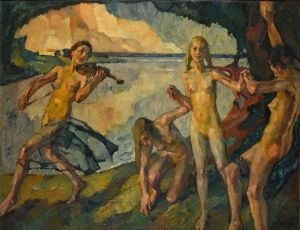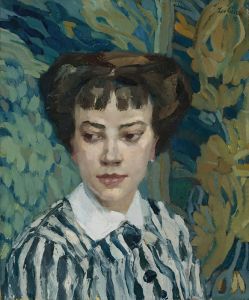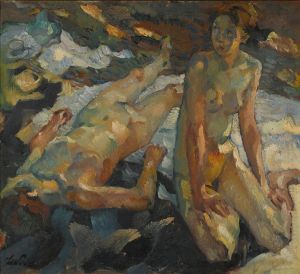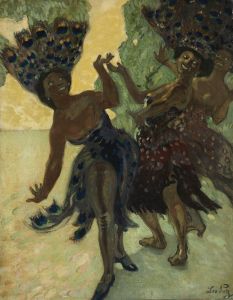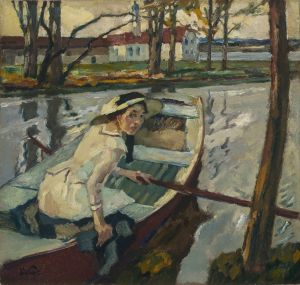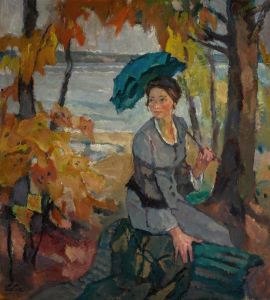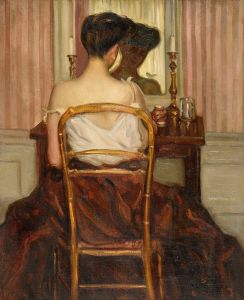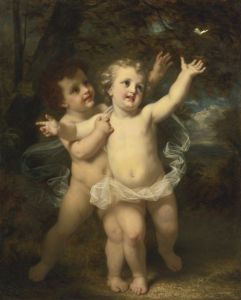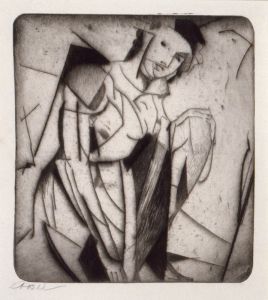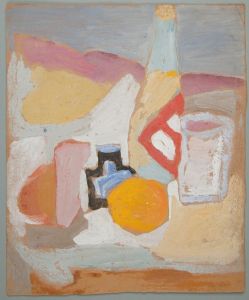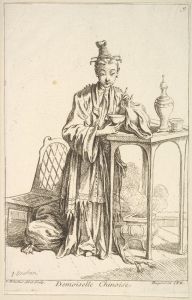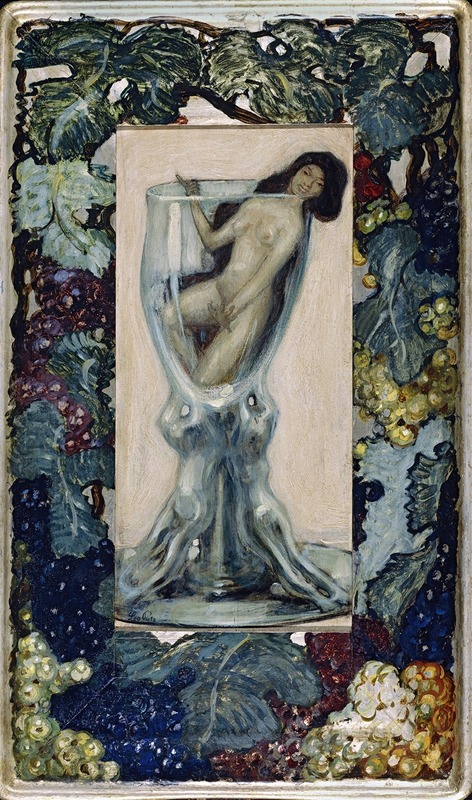
Mädchen im Glas
A hand-painted replica of Leo Putz’s masterpiece Mädchen im Glas, meticulously crafted by professional artists to capture the true essence of the original. Each piece is created with museum-quality canvas and rare mineral pigments, carefully painted by experienced artists with delicate brushstrokes and rich, layered colors to perfectly recreate the texture of the original artwork. Unlike machine-printed reproductions, this hand-painted version brings the painting to life, infused with the artist’s emotions and skill in every stroke. Whether for personal collection or home decoration, it instantly elevates the artistic atmosphere of any space.
Leo Putz was a prominent German painter associated with the Jugendstil movement, which is the German counterpart of Art Nouveau. Born on June 18, 1869, in Merano, then part of the Austro-Hungarian Empire, Putz became known for his vibrant use of color and his ability to capture the subtleties of light and shadow. His works often depicted landscapes, portraits, and scenes of everyday life, reflecting the influence of Impressionism and Symbolism.
One of Putz's notable works is "Mädchen im Glas" (translated as "Girl in Glass"). This painting exemplifies Putz's skill in rendering the human form and his interest in exploring the interplay between light and transparency. The title itself suggests a focus on the subject's interaction with a glass object, which could imply a literal or metaphorical interpretation. However, specific details about the painting's composition, dimensions, and current location are not widely documented in available historical records.
"Mädchen im Glas" is characteristic of Putz's style during the early 20th century, a period when he was actively involved with the Munich Secession, a group of artists who sought to break away from the conservative art establishment in Germany. Putz's work during this time often featured a blend of naturalism and decorative elements, aligning with the broader Art Nouveau movement's emphasis on beauty and organic forms.
Throughout his career, Putz was celebrated for his ability to convey mood and emotion through his paintings. His use of color was particularly noted for its richness and depth, often creating a sense of warmth and intimacy. This approach is likely reflected in "Mädchen im Glas," where the interplay of light and glass would have provided an opportunity for Putz to explore these qualities further.
Putz's contributions to the art world were recognized during his lifetime, and he participated in numerous exhibitions across Europe. His work was well-received, and he became a respected figure in the art community. In addition to his painting, Putz also taught at the Academy of Fine Arts in Munich, influencing a new generation of artists.
Despite the lack of detailed information about "Mädchen im Glas," the painting remains an important part of Putz's oeuvre, illustrating his mastery of technique and his engagement with contemporary artistic movements. Putz continued to paint until his death on July 21, 1940, leaving behind a legacy of works that continue to be studied and appreciated for their artistic merit and historical significance.
In summary, while specific details about "Mädchen im Glas" are limited, the painting is a testament to Leo Putz's skill and his place within the broader context of early 20th-century art. His work continues to be celebrated for its beauty and its contribution to the development of modern art in Germany and beyond.







